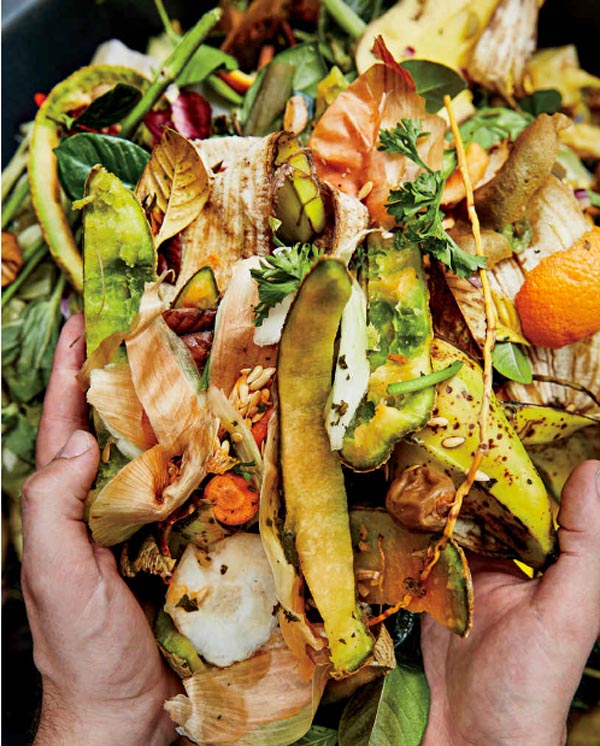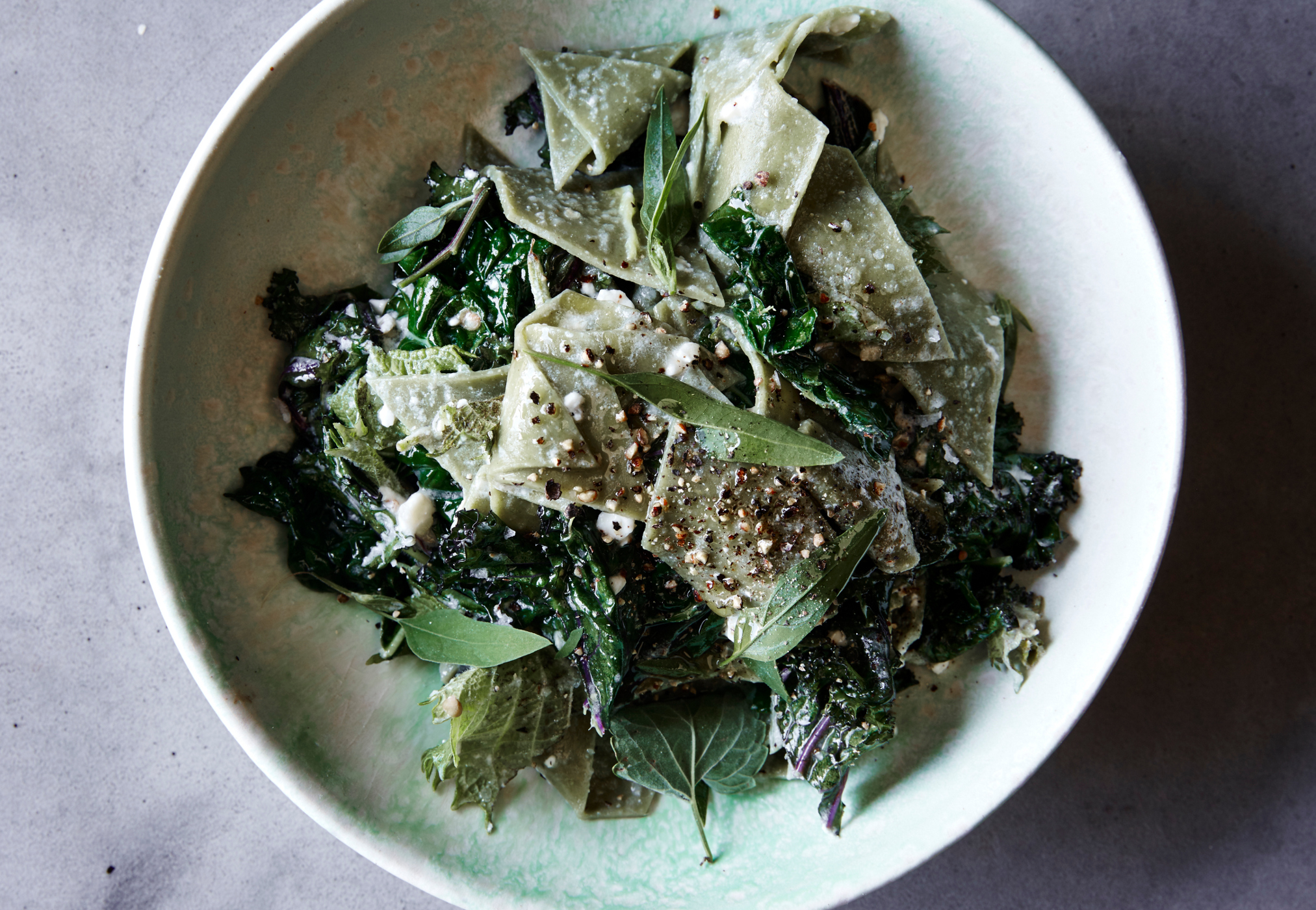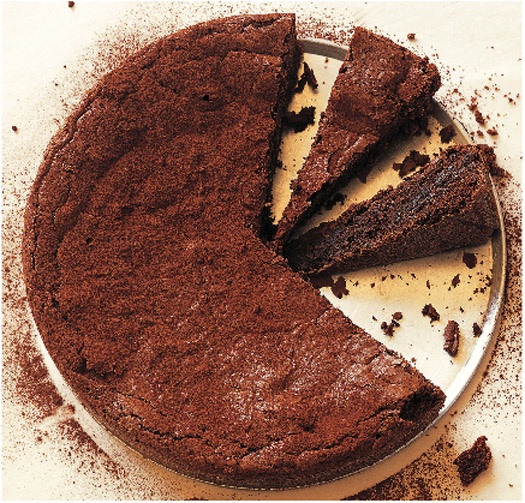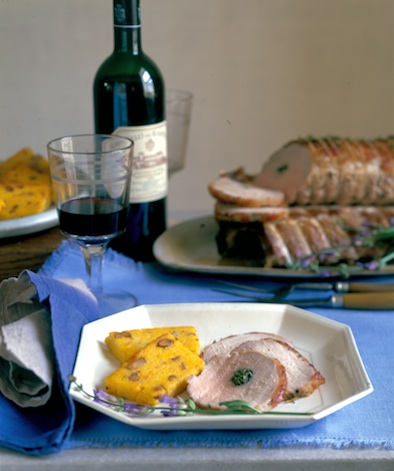I am inspired and smitten with Scraps, Wilt & Weeds: Turning Wasted Food into Plenty, a new cookbook by Michelin star chef Mads Refslund and forager Tama Matsuoka Wong. Refslund, a co-founder of Cophenhagen’s infamous restaurant, Noma, weaves a powerful philosophy of ecology into his cooking that has led him to create gorgeous, do-able dishes out of the foods we routinely throw in the trash (40% of the food in the United States).
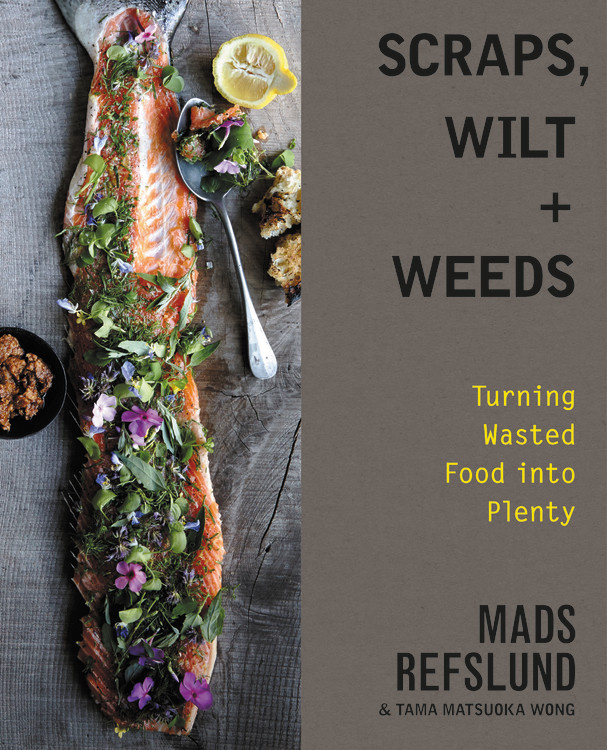
In his introduction, Turning Garbage into Gold, he writes:
…after all what is good food and what is trash? “Trash” and “scraps” are ideas that people create when they decide what is in and what is out. “Civilized cultures” decide what is luxury and what is rubbish. Who made these rules?
…I seek nature in food, by cooking and serving it on the plate. I always start by wanting to see what the produce is like whole, the way it was living in nature. Yes, with dirt and guts and tough parts. Each of these parts is important and has a role in the life of that species and is beautiful in its own way.
Using all the parts is a way of respecting the plant, the fish, the animal, and its life.
Of course, you have to set aside the parts that have poisons, such as apple seeds, but there are ways to tenderize the tough, to puree the wilted, and make the most of the basic character of a native plant or animal.
Look at their strengths, not their weaknesses. They may still have a beautiful color, even if misshapen. Their shriveled structure may mean they are already on their way to becoming dried.
For me, cooking has got to start with this view.
Read the entire, very wonderful, introduction here.
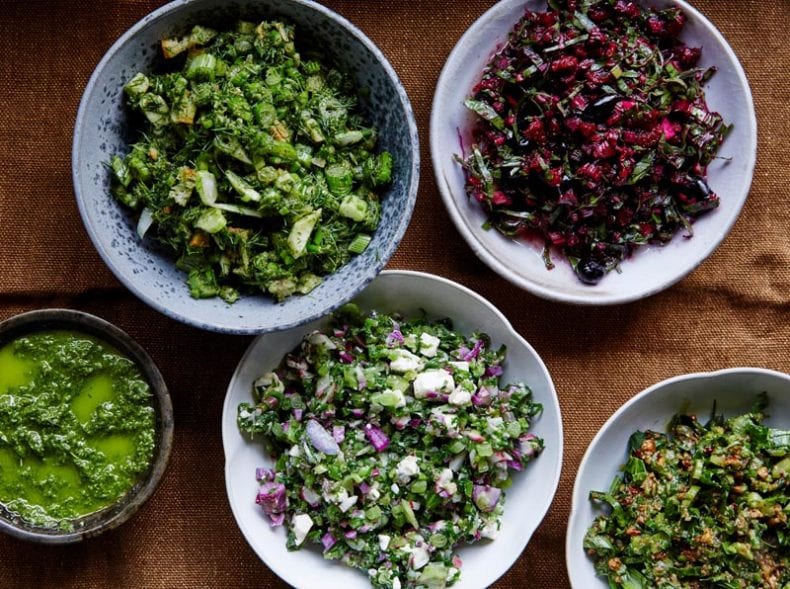
Refslund teaches how to see through a low-waste lens to transform all the good stuff we routinely reject as trash — potato peels, cauliflower stems, fish skin and collars, overripe fruit, stale bread — into dishes like Broccoli Stems with Lardo & Fresh Coriander Seeds, Pork Ribs Glazed with Overripe Pear Sauce, Carrot Tops Pesto, Cabbage Cores & Leaves in Broken-Rice Risotto….
The more complex recipes are full of ideas and parts that can be extracted to make simpler dishes. Although I doubt I’ll be up for making Kale Pulp Pasta (top), the Torn Kale Sauce would be great on a store bought wide flat pasta.
Refslund explores the reasons so much food is thrown away in our country (why I unnecessarily throw food away), and explains such practicalities as Expiration Dates, and When Food is No Longer Safe to Eat, as well as Master Recipes into which you can plug whatever scraps you have on hand.
Here are a couple of recipes that illustrate the kinds of principles and approaches Refslund advocates, with which you can improvise endlessly.
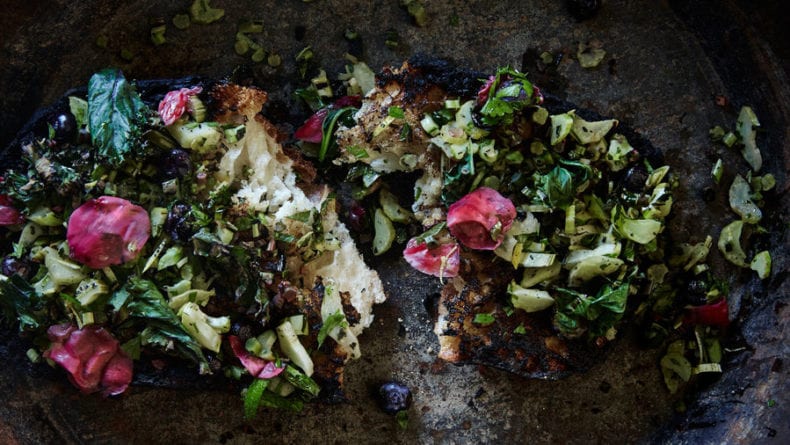
Recipe: Wrinkled Berry Salsa with Herb and Kale Stems
Editor’s Note: Salsa is something of a misnomer. It is more like a tapanade.
2 cups chopped (1-inch pieces) kale stems (or other ribs of any leafy vegetable tops, such as chard, collards, or beets)
4 tablespoons olive oil
Kosher salt
1 cup wrinkled imperfect blueberries
1 cup finely chopped scraps (stems and leaves) of fresh herbs (parsley, cilantro, mint, rosemary, dill, tarragon)
1 clove garlic, finely minced
Grated zest of 1 lemon
2 tablespoons fresh lemon juice
1/4 cup chopped lightly pickled condiment of your choice (like Pickled Rose Petals on page 265 of the book)
Freshly ground black pepper, to taste
Toasted bread (like Day-Old Charred Garlic Bread on page 154 of the book)
Brush the kale stems with 1 tablespoon of the oil and sprinkle with 1/4 teaspoon salt. Heat a dry cast iron skillet over high heat. Add the kale stems and sear for 5 minutes, until lightly browned and softened.
In a medium bowl, combine the seared ribs with the remaining 3 tablespoons olive oil, the blueberries, herb stems, garlic, lemon zest, lemon juice, and pickles. Add salt and pepper to taste. Serve on top of toasted bread.
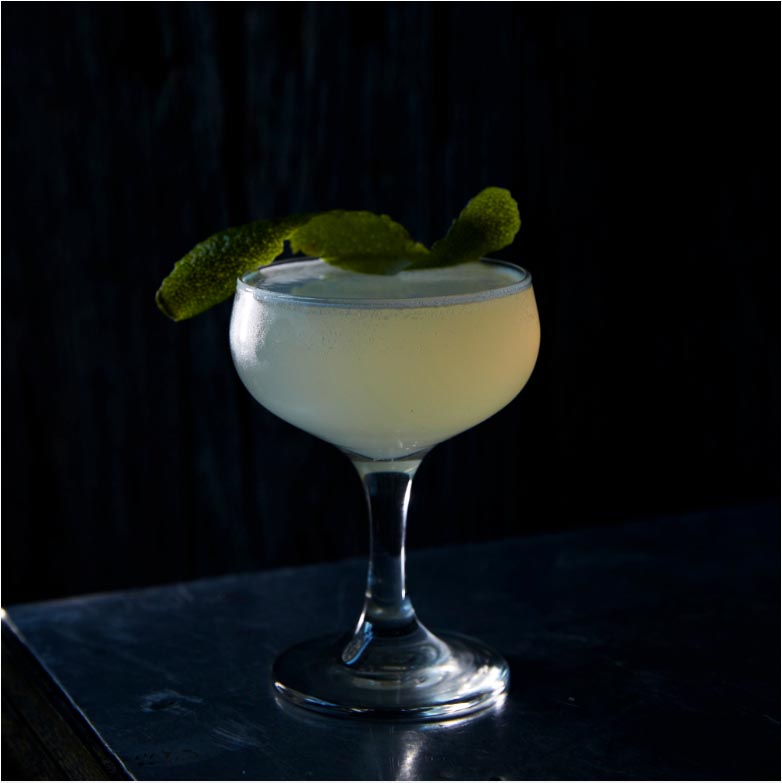
Recipe: Used Grapefruit Gin and Tonic
The sweet tang of grapefruit syrup replaces the tonic for a refreshing and natural twist on the classic G&T. I developed this and all the other cocktail recipes in this book with Michael Reynolds, co-owner of the downtown New York City bar Black Crescent (and formerly of the iconic Booker and Dax cocktail bar). You can find several other unique cocktails that we developed together on the following pages.
Makes 1 cocktail
2 ounces (1/4 cup) gin
¾ ounce (1 ½ tablespoons) Used Grapefruit Syrup
½ ounce (1 tablespoon) lime juice
¼ ounce (1/2 tablespoon) simple syrup (1 part sugar dissolved in 1 part water)
Ice
½ ounce (1 tablespoon) soda water
In a shaker, combine the gin, grapefruit syrup, lime juice, and simple syrup. Fill the shaker with ice and shake vigorously until the contents are completely chilled. Pour the liquid through a fine-mesh strainer into a coupe glass. Top off with the soda water.
Recipe: Used Grapefruit Syrup
Most people eat a grapefruit by cutting out each pink fleshy segment with a knife. Left behind for the garbage are the peels, the membranes, even a fair amount of flesh, and the juice. Save them all for this syrup, which can also be made into a vinaigrette for salads or vegetables.
Makes about one cup, enough for 15 cocktails
Flesh scraped from 2 leftover organic large grapefruit halves
2 grapefruit peels (1 inch square each)
1/2 cup grapefruit juice, squeezed from the halves
1 cup sugar
1/2 cup water
In a medium saucepan, combine the grapefruit flesh, peels, and juice with the sugar and water. Bring to a boil, then turn down the heat to low. Simmer for 5 minutes until the syrup starts turning slightly brown and is reduced to about 1 cup.
Remove from the heat, let cool, and strain.
Compost the solids and store the syrup in the refrigerator for up to 15 days.
